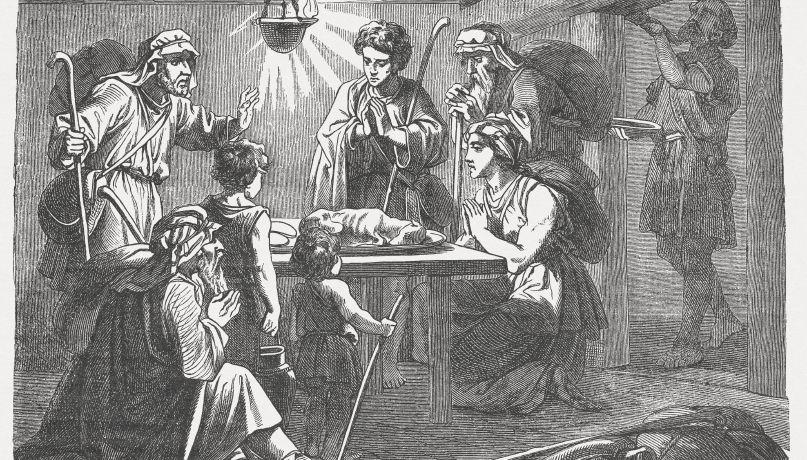Jesus knew what He would face: “You know that after two days is the Passover, and the Son of Man will be delivered up to be crucified” (Matthew 26:2).

Do Passover and Unleavened Bread have relevance today?
The spring festivals (found in Leviticus 23) have deep symbolism for Christians today that transcends the sacrificial laws that ended with Christ’s death. The Passover symbolizes the sacrifice of Jesus Christ for our sins. The festival called the Days of Unleavened Bread symbolizes our need to live free of sin, after having our past sins forgiven.
Just before His betrayal and crucifixion, Jesus asked His disciples to prepare for His final Passover (Matthew 26:18-20). This evening, commemorated since the time of the Exodus from Egypt, involved the sacrifice of an unblemished lamb whose blood protected the Israelites while the firstborn of the Egyptians were slain (Exodus 12:5-7, 12-14).
The New Testament makes clear that this lamb represented Jesus Christ. As John the Baptist had announced about Jesus, “Behold! The Lamb of God who takes away the sin of the world!” (John 1:29).
This last Passover was special, and Jesus taught His disciples new elements that would become the basis of the New Testament Passover service.
First, Jesus Christ set the example of love and service through washing His disciples’ feet (John 13:4-13). Then He told them, “If I then, your Lord and Teacher, have washed your feet, you also ought to wash one another’s feet. For I have given you an example, that you should do as I have done to you” (John 13:14-15).
The symbols of the bread and the wine
After the foot washing, Jesus instituted two deeply meaningful symbols of the New Testament Passover.
“And as they were eating, Jesus took bread, blessed and broke it, and gave it to the disciples and said, ‘Take, eat; this is My body.’ Then He took the cup, and gave thanks, and gave it to them, saying, ‘Drink from it, all of you. For this is My blood of the new covenant, which is shed for many for the remission of sins’” (Matthew 26:26-28).
Paul reminded the Church, both Jews and gentiles, of the vital importance of this memorial that represents Christ’s death and of remembering our commitment to God.
Jesus said the bread represented His body. He willingly suffered to take our infirmities and bear our sicknesses (Matthew 8:16-17; Isaiah 53:3-5). Jesus is also the Bread that makes eternal life possible as we allow Him to live in us (Galatians 2:20).
The wine represents His shed blood given for the forgiveness of our sins.
The apostle Paul repeated these Passover instructions about the bread and the wine in 1 Corinthians 11:23-26. He reminded the Church, both Jews and gentiles, of the vital importance of this memorial that represents Christ’s death and of remembering our commitment to God.
Looking for the church behind Life, Hope & Truth? See our “Who We Are” page.
Why did Christ have to die?
Why did Jesus come to the earth as a human being to die? Because of sin—the destructive thoughts and actions that go against God’s will (1 John 3:4).
God reveals His thinking and way of life throughout the Bible, and especially in His 10 Commandments and His good and beneficial laws that show us how He intends life to be lived. When we break His laws, we bring automatic penalties on ourselves, and especially the penalty of death—eternal death. We have all earned this penalty (Romans 3:23; 6:23).
God, in His perfect eternal justice, must exact the penalty; but in His awesome mercy, Jesus Christ was willing to pay that penalty for us! “For God so loved the world that He gave His only begotten Son, that whoever believes in Him should not perish but have everlasting life” (John 3:16). Christ gave His life so we could repent and be saved (1 Timothy 2:4).
That is the solemn yet joyous message of the annual Passover. This is the first step in God’s plan of salvation. The second step is represented by the second festival, the Feast of Unleavened Bread.
Do you have more questions about the Christian Passover? Read “Questions and Answers About the Christian Passover.”





